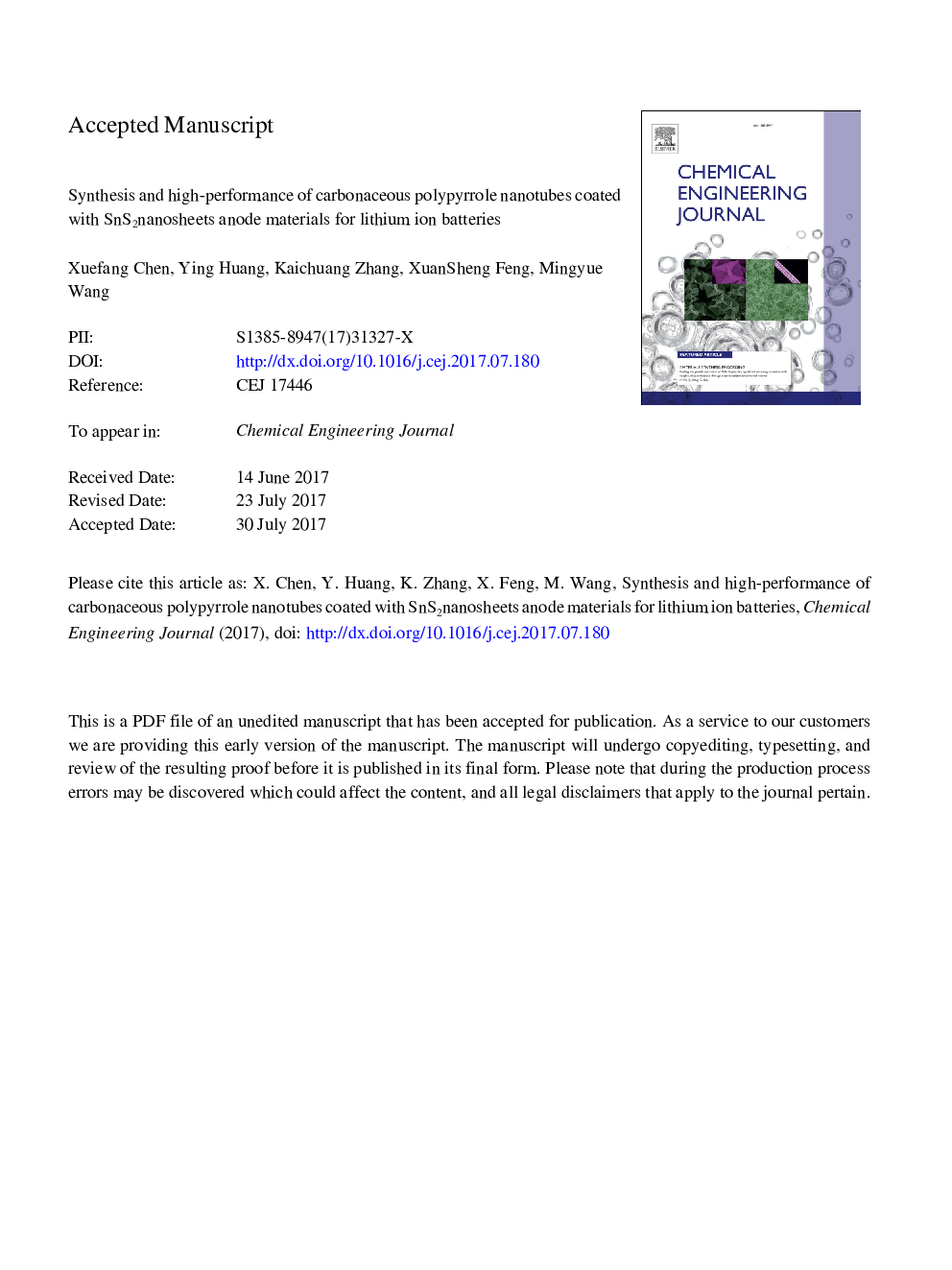| Article ID | Journal | Published Year | Pages | File Type |
|---|---|---|---|---|
| 4762912 | Chemical Engineering Journal | 2017 | 23 Pages |
Abstract
Carbonaceous polypyrrole nanotubes coated with SnS2 nanosheets (CPN@SnS2) were successfully synthesized via a simple polymerization process and further a hydrothermal method. Used as anode materials, the CPN@SnS2 electrode exhibited a high specific reversible capacity, significant rate capability as well as enhanced cycling stability. It was found that the initial discharge capacity was 1422Â mAh/g and the reversible capacity was 699.2Â mAh/g after 100 cycles. The unique structure and synergetic effect of the CPN@SnS2 composite were contributed to the enhanced electrochemical performance, in which the 2D ultrathin nanostructure facilitated lithium ions insertion and the CPN greatly improved the electronic conductivity for fast electron supply. In addition, acting as a mechanical support, the conductive CPN could buffer the strain resulting from the volume change in the process insertion/extration of lithium ions. This study inspired a better design of other transition metal oxide-based anode materials with desirable electrochemical performance for lithium ion battery applications.
Related Topics
Physical Sciences and Engineering
Chemical Engineering
Chemical Engineering (General)
Authors
Xuefang Chen, Ying Huang, Kaichuang Zhang, XuanSheng Feng, Mingyue Wang,
